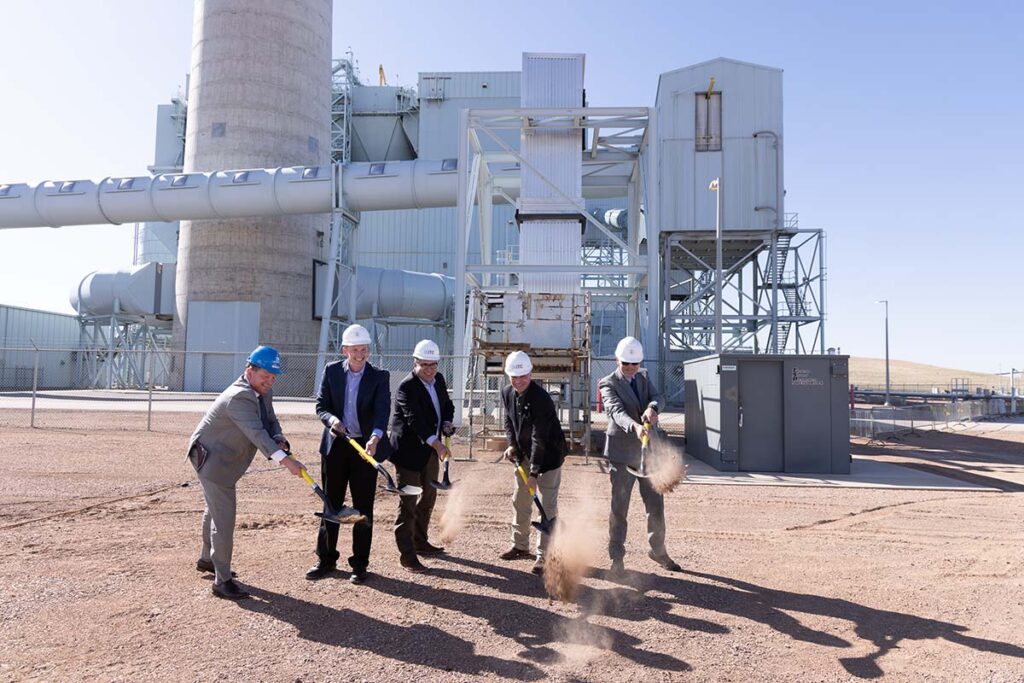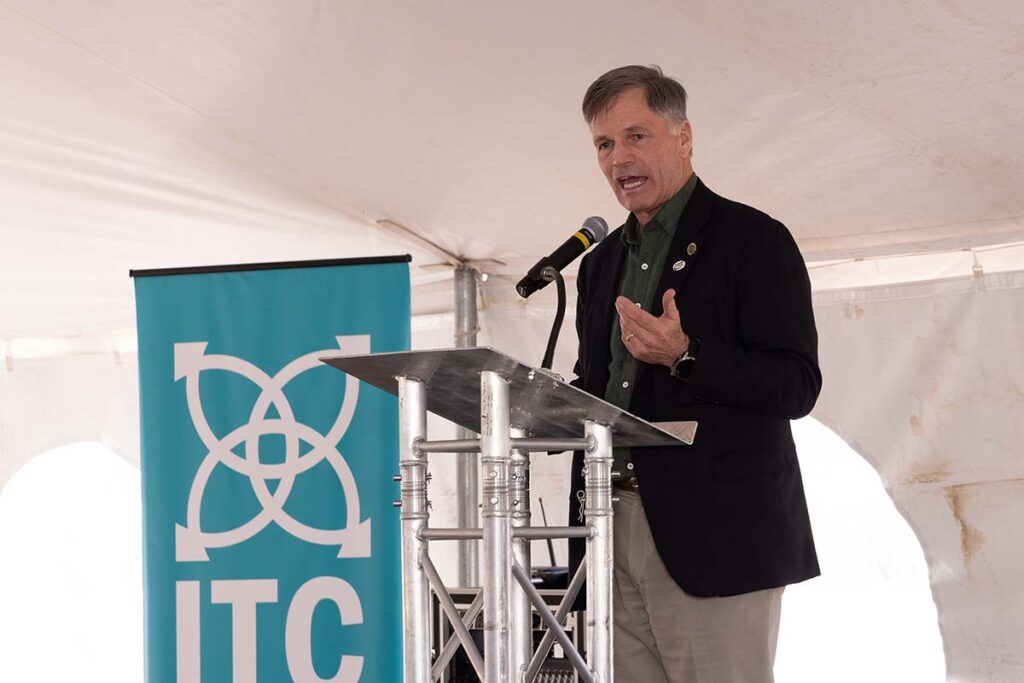
A Basin Electric Power Cooperative coal-based power plant in Wyoming is advancing efforts to ease the environmental impact of carbon dioxide and attracting international participation from both corporate and scientific researchers.
Representatives of Kawasaki Heavy Industries, the Japan Carbon Frontier Organization and Newark, California-based Membrane Technology and Research joined co-op and state officials in Gillette for a groundbreaking event at the Wyoming Integrated Test Center earlier this month for two facilities designed to use CO2 captured from the flue gas produced at Basin Electric’s Dry Fork Station.
“We are excited to be a part of the pursuit to find a means of reducing carbon while continuing to use coal to power the economy,” said Basin Electric CEO and General Manager Todd Telesz.
Launched as a public-private partnership in 2016, the $21 million Wyoming ITC is designed to collect CO2 from flue gas produced by the 405-megawatt, coal-based Dry Fork Station. It’s supported by funding from Bismarck, North Dakota-based Basin Electric, Denver, Colorado-based Tri-State Generation and Transmission Association, NRECA and the state of Wyoming.
“Carbon capture will be absolutely essential to ensuring baseload power continues to be available to the grid,” said Jason Begger, managing director of ITC, during the groundbreaking event.
MTR President Brett Andrews said his company will build and operate a large pilot program at the Wyoming ITC capable of processing 150 tons of CO2 a day. “This will be the largest non-solvent-based capture plant in the world, and it represents our final step toward commercial deployment.”
Kawasaki is teaming with Japan Carbon Frontier Organization to produce sorbent, a dry product used to absorb or adsorb liquids or gasses, attaching them to more substantial solid molecule.
“We shall focus on our efforts to promote zero-CO2-emissions technologies for coal utilization and not on coal phase-out,” said Tomohiko Sugimoto, general manager of Kawasaki Heavy Industries.
While many carbon capture technologies are being developed and studied in laboratory settings, the ITC is one of the few research facilities at an operating coal-fired power plant. That allows for real-world testing and alleviates typical concerns over being able to transfer technology from a lab to a plant.

“Partnerships such as these with Japan and the [U.S. Department of Energy] underscore the global leadership Wyoming has to offer regarding transitioning traditional energy development through the reduction of carbon emissions,” said Wyoming Gov. Mark Gordon at the groundbreaking.
While Dry Fork Station has only been in operation for a dozen years, Basin Electric has invested millions in projects designed to protect its investment and mitigate environmental impacts.
“Dry Fork Station is our newest power plant, and it made the most sense to continue with the research on that plant site,” said Jim Sheldon, Basin Electric’s manager of mechanical engineering. “We’re involved in these projects to educate ourselves, not only about capturing and storing carbon dioxide generally, but also specifically for the plant.”
Derrill Holly is a staff writer for NRECA.